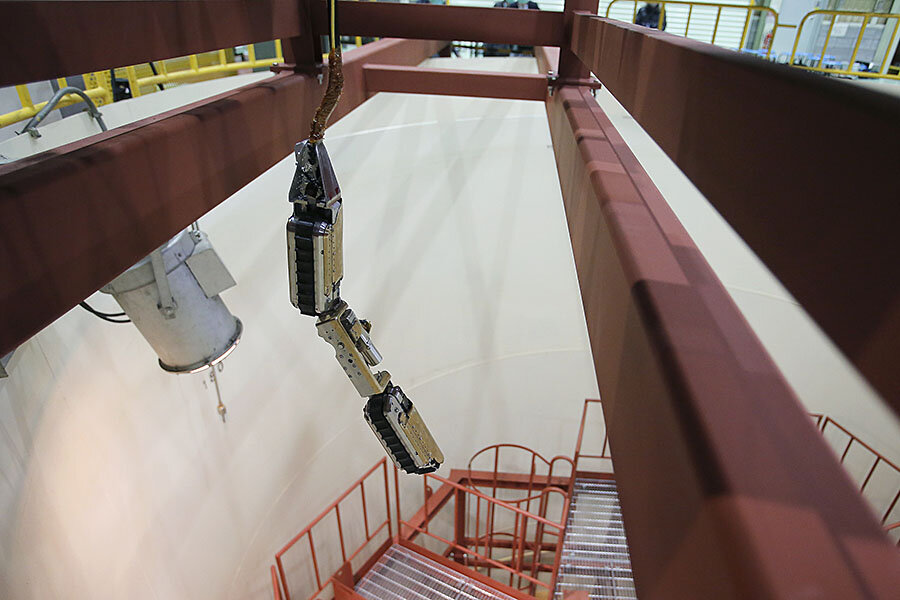This serpentine robot is helping clean up the Fukushima disaster
Japan’s Fukushima Daiichi nuclear plant, which suffered three reactor meltdowns from an earthquake and tsunami in March 2011, can’t be decommissioned until its ruined reactors are inspected. But because of deadly radiation, no human can get close to the facility to survey the damage.
So the Japanese electronics giant Hitachi and an affiliate, Hitachi-GE Nuclear Energy, have designed a snaky-looking, remotely controlled robot to do the job, perhaps as soon as April, to gather information about the state of the No. 1 reactor building to prepare for the removal of its radioactive rubble.
The utility that operates the power plant, Tokyo Electric Power Co. (TEPCO), intends to repair and seal off all damaged chambers in the facility, then fill them with water as a step toward eventually removing the melted remains. That is expected to take place in about 10 years.
Hitachi and Hitachi-GE demonstrated the shape-shifting robot on Feb. 5 at a plant owned by Hitachi-GE. It showed that the slinky, 2-foot-long robot can morph a bit depending on the space it needs to occupy and the work it needs to do.
In the demonstration, the robot, equipped with a camera and a lamp on its “nose,” snaked its way through a pipe with a diameter of only 4 inches. When it emerged from the other end of the pipe, it expanded to a U shape, then crawled around, taking live images of the immediate area and capturing temperature and radiation levels.
The robot simultaneously transmitted all this information to a remote station far from the damaged reactor. But the lifespan of some of its equipment is limited. Strong radiation is harmful to electronics, so the robot’s camera is believed to be functional for no more than 10 hours.
Still, Hitachi-GE engineer Yoshitomo Takahashi remains optimistic. “Depending on how much data we can collect from this area, I believe [the probe] will give us a clearer vision for future decommissioning,” he told The Associated Press.
For all the work that went into it, the Hitachi robot will be a single-use tool. Once it’s finished its survey of the reactor, it is expected to be stored in a shielded box because of its extremely high radioactivity, and it will not be reused. Also, differently designed robots must be used for each reactor, and sometimes more than one robot is needed to inspect a single reactor properly.
For example, an amphibious robot is being developed to be used next year to assess the state of the debris under water at the No. 1 reactors. Using computer models, accident investigators have concluded that all its fuel rods probably melted and now rest at the bottom of its containment chamber. But until they use the amphibious robot, they can’t be sure.
Hitachi and Hitachi-GE developed the robot in cooperation with the International Research Institute for Nuclear Decommissioning, an organization made up of electric power companies and nuclear power plant manufacturers. The project was financed by a subsidy from the government of Japan.
Naohiro Masuda, TEPCO’s chief decommissioning officer, called the robot program “a great example of how the innovation and cooperation from external experts is helping us overcome challenges and make progress toward decommissioning. I hope that this will give us an opportunity to contribute to technological advancement and to share such progress with the rest of the world.”





